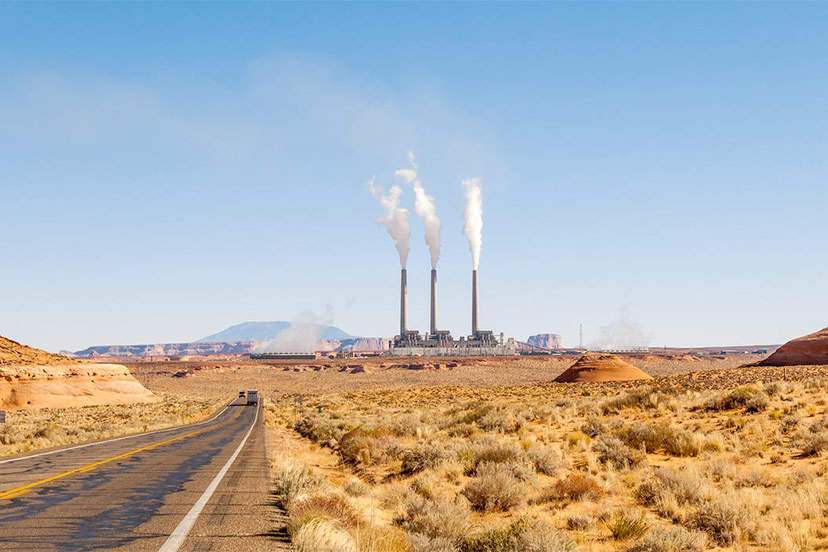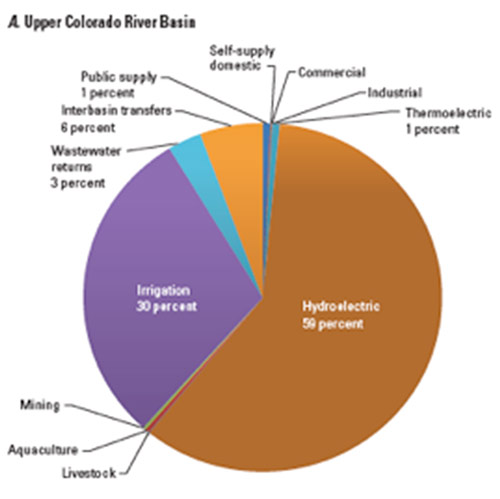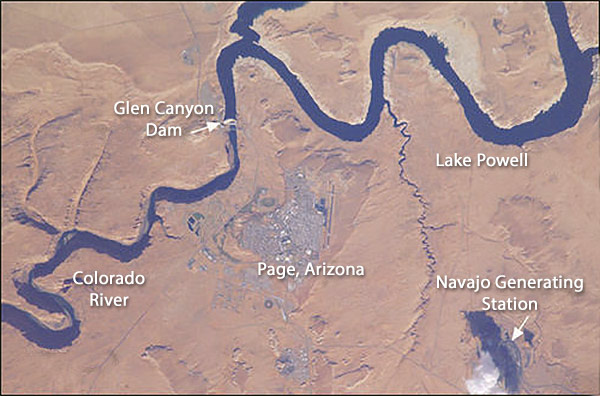PHOTO: The Navajo Generating Station near Page, Arizona, in 2018, before it was decommissioned.
Most of the 22 water saving methods proposed by Water Education Colorado are pretty easy. Defrost foods in the fridge, instead of running cold water over them. Use a broom, not a hose, to clear debris from your driveway…
— from the Water22.org website, “22 Easy Ways Coloradans Can Save Water”
There are easy, relatively painless, ways to “save water”, as have been shared over the past year by Water Education Colorado, on the Water22.org website.
Most of suggestions, although certainly easy, will do nothing to help solve the serious water problem in the American West. The ways to solve the problem are going to be anything but easy, and anything but painless. They are going to be difficult, and painful. And expensive.
Disclosure: I currently serve on the Pagosa Area Water and Sanitation District (PAWSD) Board of Directors, but this editorial series reflects only my personal opinions, and not necessarily the opinions of the PAWSD Board as a whole.
I’ve recently been reading a book by University of Texas professor H. W. Brands. “American Dreams: The United States Since 1945.” Published in 2010. Chapter Nine is titled, “South by Southwest.”
Other factors contributed to the evolution of the New South. One was a lowly bit of technology that nonetheless made all the difference.
And perhaps also a big difference in terms of the water problem in the American Southwest.
In 1902, the Sackett-Wilhelms Lithographing & Publishing Company of Brooklyn, New York, hired a young Cornell graduate named Willis Carrier to solve some serious printing issues. The summers in New York were so humid that the paper grew and shrank, resulting in poor quality images, because the color printing process involved running the same piece of paper up to four times, each with a different color ink.
The young engineer submitted his drawings for an “air-conditioning” system on July 17, 1902. The system aimed to control not only the air temperature, but also the humidity, while simultaneously removing particulate matter.
After several more years of refinement and field testing, Carrier was granted U.S. Patent 808,897 for an Apparatus for Treating Air, designed to humidify or dehumidify air. Carrier had discovered that “constant dew-point depression provided practically constant relative humidity…” leading him to design an automatic control system, patented in 1914.
Seeing no reason why printing companies should be the sole beneficiaries of his invention, he formed the Carrier Air Conditioning Company, and set out to make America more comfortable.
Especially, the South and the Southwest.
Previously, the South had been an unattractive place to locate a corporate headquarters, due to its uncomfortable summer heat and humidity. And summers in the Southwest, including Texas, New Mexico, Arizona and Southern California, were almost unbearably hot… and mostly, dry.
Following World War II, as the American economy took off like a jet fighter plane, corporations and governments, especially in the South and Southwest, began installing air conditioning as a standard feature in new buildings. In the 1960s, air conditioning began appearing in residential homes… and even in automobiles.
Willis Carrier’s invention solved a big piece of the climate problem in the Southwest. From the US Census Bureau website:
For every decade between 1950 and 2010, the growth rate of the Desert Southwest was at least twice as great as that for the United States as a whole. In three of those periods, the growth rate in the region was at least triple the U.S. growth rate: 1950 to 1960, 1970 to 1980, and 1980 to 1990. In fact, in each of those decades, the growth rate of the Desert Southwest exceeded 40 percent.
While the region’s growth has decreased somewhat over the decades, it was still over 20 percent from 2000 to 2010. From 2010 to 2016 growth in the region continued to outpace that of the United States as a whole.
As of 2022, seven of the ten largest cities in the U.S. are in the American Southwest… thanks largely to Willis Carrier.
Yesterday, I shared a (low resolution) chart illustrating uses of the Colorado River, found on the U.S. Geological Survey website, and noted that “Public supply” — that is, municipal water systems — account for about 1% [“one percent”] of the water used in the Upper Colorado Basin.
We’ll take another look at that chart.
The most important use of Colorado River water — which includes, of course, water from tributaries like the San Juan River — is the generation of hydroelectricity, a use that accounts for about 60% [“sixty percent”] of all water used.
We will note that the water used for generating electricity does not disappear. Once it passes through the turbines of the Glen Canyon Dam or the Hoover Dam — or any of the other generating turbines along the Colorado river — it continues downstream, to be used by farmers and ranchers and municipal water systems. But it has to be ‘collected’ first, to be used for hydroelectricity. We cannot depend upon Mother Nature. We have to depend on engineers. Who depend on taxpayers.
We must dam the river, and greatly alter the riperian environment. And then pray that the climate doesn’t change.
In 1945, the average American household used about 1,400 kWh of electricity per year.
In Phoenix, Arizona, the average household uses about 21,000 kWh of electricity per year. That’s about 15 times as much as in 1945.
If we consider that the population of the Phoenix metropolitan area has increased from about 200,000 in 1945 to 4.6 million in 2022, we might estimate that the electricity demand in Phoenix has increased by 34,500% [“thirty four thousand five hundred percent”] since the end of World War II.
Can we guess that hydroelectricity has played a role in the growth of Phoenix?
While researching this editorial, I happened upon a lecture by Andrew Needham given at New York University in 2014. Mr. Needham had just published a book entitled Power Lines: Phoenix and the Making of the Modern Southwest. During his lecture, he focused on the coal-fired electrical power plants built on the Navajo Reservation during the 1970s, with one of the largest — the Navajo Generating Station — located near the Glen Canyon Dam.
Construction of the Navajo Generating Station began in 1970, and the expectation was that the plant would produce up to 2.25 Gigawatts of electricity for Arizona, Nevada and southern California…
…and would also be a main power source for the massive pumps needed for the planned Central Arizona Project, a 340-mile long canal that would deliver about 1.4 million acre-feet of Colorado River water, annually, to Phoenix, Tucson and about 1 million acres of ‘agricultural’ land in central Arizona.

Faced with a federal proposal to build two hydroelectric dams within the Grand Canyon, a coalition of conservationists led by the Sierra Club fought tooth and nail during the 1960s to stop the dams — and in the process, came to view coal-fired plants as a reasonable compromise.
The National Parks Conservation Association executive director at the time, Anthony Wayne Smith, wrote that “coal will do the job more cheaply, and save the canyons of the Colorado.”
2.25 gigawatts seems like a significant amount of electricity. The turbines in the Hoover Dam can produce about 2 gigawatts from Colorado River water, when Lake Mead is full… and Glen Canyon Dam can produce up to about 1.3 gigawatts.
The Navajo Generating Station was shut down in 2019, and is currently being decommissioned. The station’s three stacks were toppled in December 2020.
I’m not sure, as I write this morning, how big a role Colorado River hydroelectricity plays in the current “water crisis”.
But surely… it plays a larger role than whether we choose to defrost food in our refrigerator.



